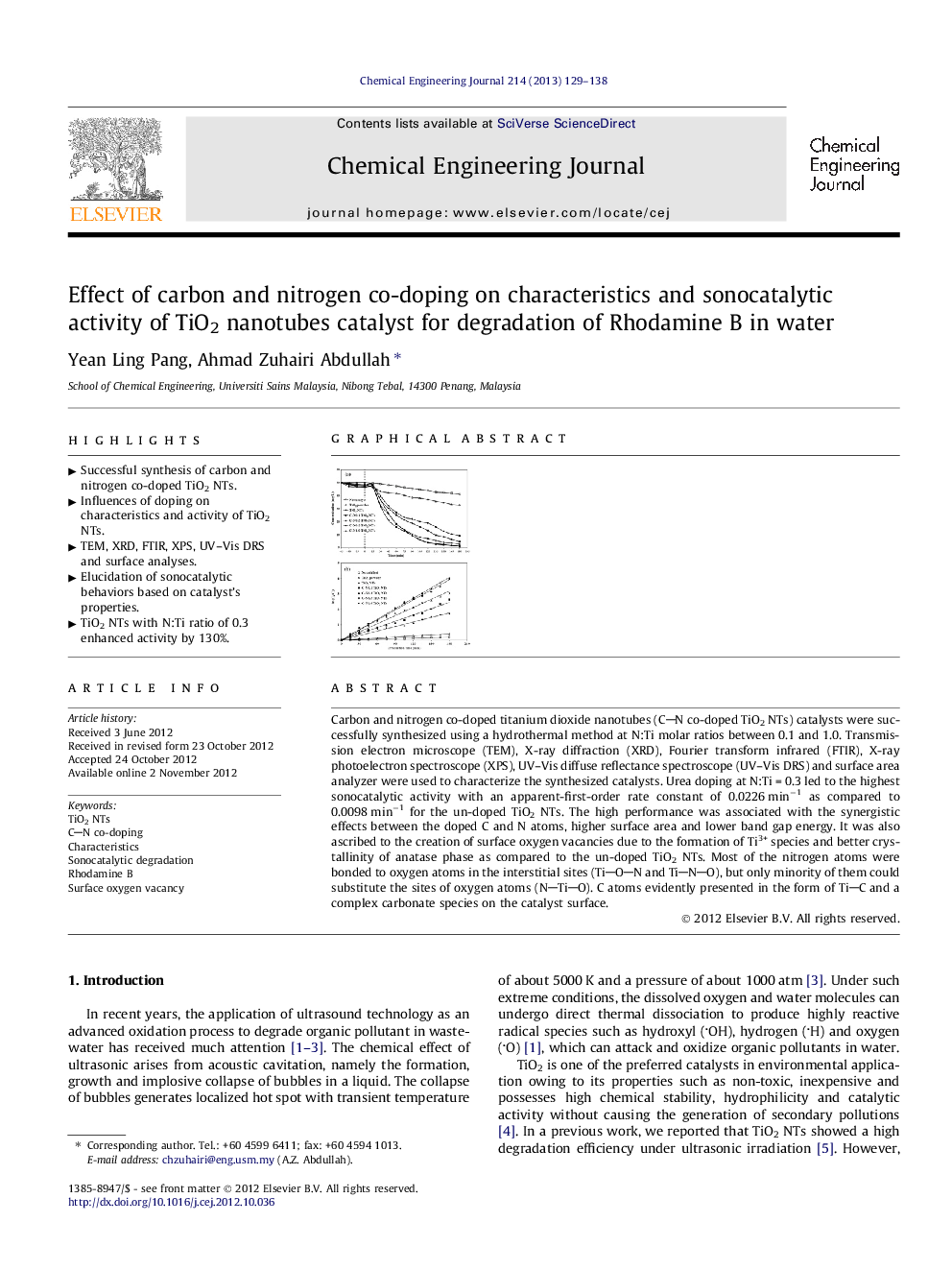| Article ID | Journal | Published Year | Pages | File Type |
|---|---|---|---|---|
| 149042 | Chemical Engineering Journal | 2013 | 10 Pages |
Carbon and nitrogen co-doped titanium dioxide nanotubes (CN co-doped TiO2 NTs) catalysts were successfully synthesized using a hydrothermal method at N:Ti molar ratios between 0.1 and 1.0. Transmission electron microscope (TEM), X-ray diffraction (XRD), Fourier transform infrared (FTIR), X-ray photoelectron spectroscope (XPS), UV–Vis diffuse reflectance spectroscope (UV–Vis DRS) and surface area analyzer were used to characterize the synthesized catalysts. Urea doping at N:Ti = 0.3 led to the highest sonocatalytic activity with an apparent-first-order rate constant of 0.0226 min−1 as compared to 0.0098 min−1 for the un-doped TiO2 NTs. The high performance was associated with the synergistic effects between the doped C and N atoms, higher surface area and lower band gap energy. It was also ascribed to the creation of surface oxygen vacancies due to the formation of Ti3+ species and better crystallinity of anatase phase as compared to the un-doped TiO2 NTs. Most of the nitrogen atoms were bonded to oxygen atoms in the interstitial sites (TiON and TiNO), but only minority of them could substitute the sites of oxygen atoms (NTiO). C atoms evidently presented in the form of TiC and a complex carbonate species on the catalyst surface.
Graphical abstractFigure optionsDownload full-size imageDownload as PowerPoint slideHighlights► Successful synthesis of carbon and nitrogen co-doped TiO2 NTs. ► Influences of doping on characteristics and activity of TiO2 NTs. ► TEM, XRD, FTIR, XPS, UV–Vis DRS and surface analyses. ► Elucidation of sonocatalytic behaviors based on catalyst’s properties. ► TiO2 NTs with N:Ti ratio of 0.3 enhanced activity by 130%.
